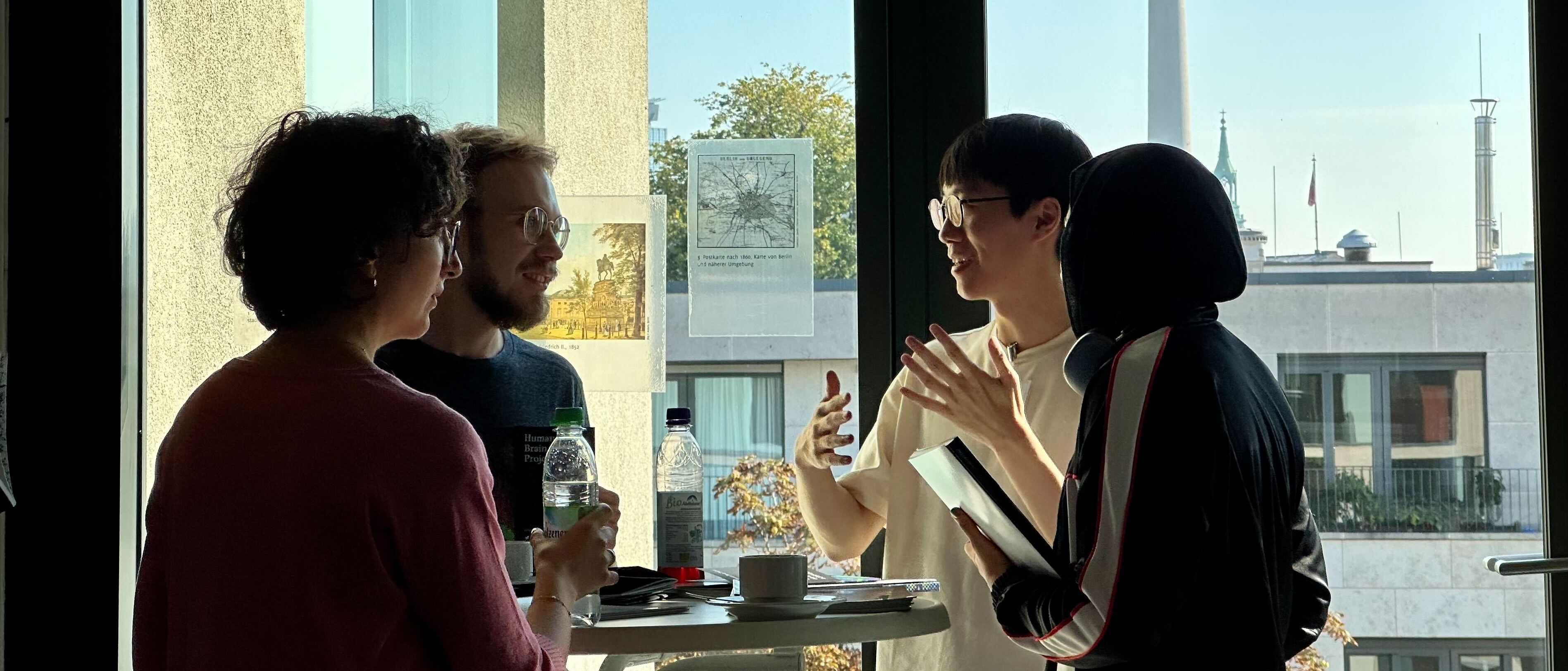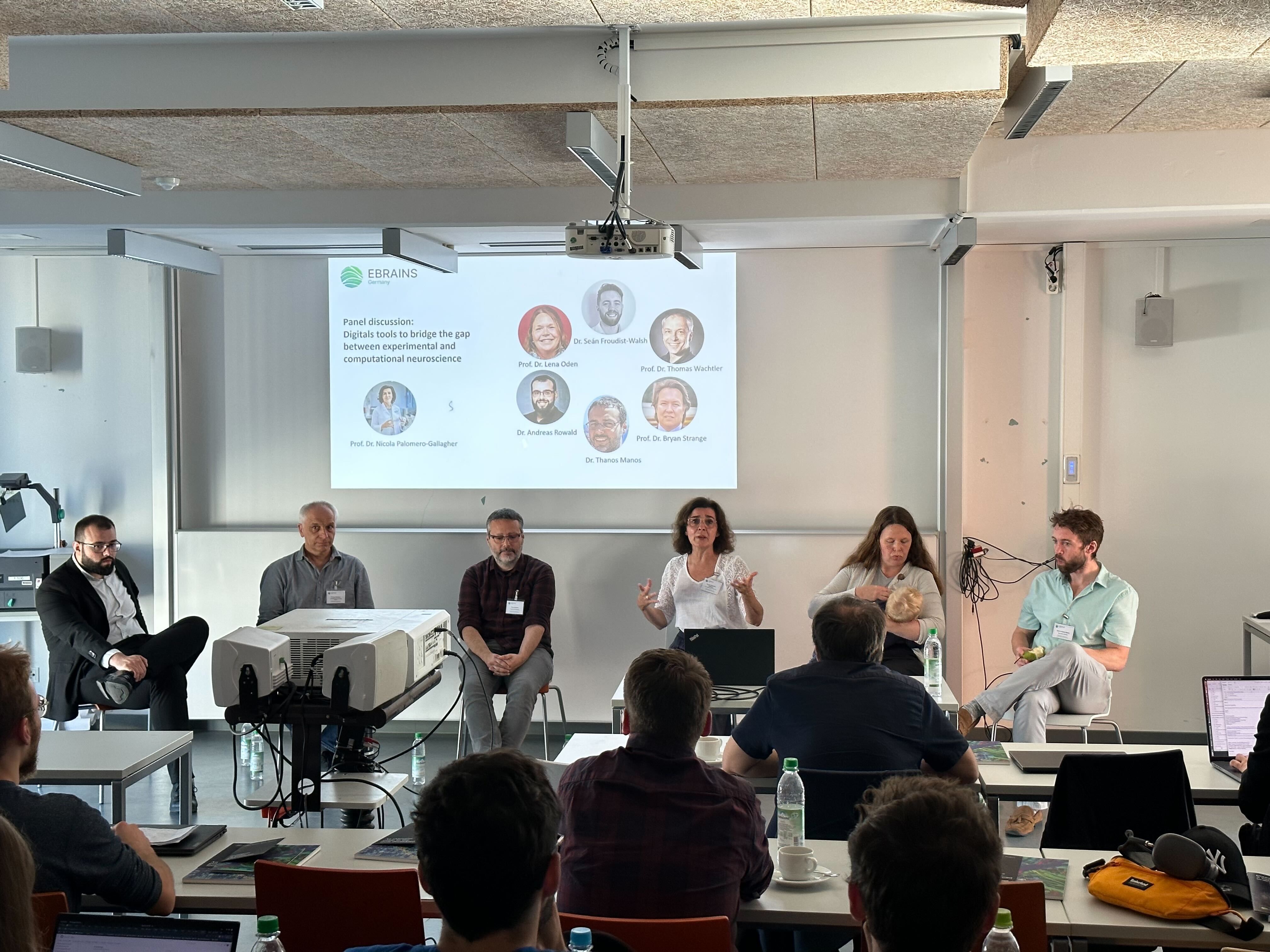
EBRAINS Germany workshop: new bridges between experimental brain researchers and computer scientists

The workshop was characterized by a lively exchange between participants, specifically, between theoretical neuroscientists, who build computational models of the brain, and experimentalists, who acquire empirical brain data. Within the EBRAINS national node, which is currently being formed by around 40 institutions across Germany, these groups are coming together to develop a common scientific and technical strategy.
Petra Ritter of Charité, Universitätsmedizin Berlin, provided an overview of the different tools and services that the EBRAINS infrastructure provides openly to the scientific community. The EBRAINS infrastructure was built as part of the Human Brain Project (HBP). While the HBP ends this month, EBRAINS will continue to serve the scientific community long-term.
One message came through very clearly in Berlin: the strong interest of the participants to be part of the EBRAINS infrastructure by contributing with their own data and tools and by making use of the many resources EBRAINS has to offer. There were a lot of questions related to the “how”. For example, how various types of data can be integrated, or how EBRAINS can be used to address specific research questions. To address such questions, the EBRAINS infrastructure offers high-level support to assist researchers to integrate their science and to use the different tools and services for their own work.

During a panel discussion, Thomas Wachtler of Ludwig-Maximilians-University Munich stressed the importance of sharing success stories that provide concrete examples how EBRAINS can advance different types of research. Seán Froudist-Walsh of the University of Bristol presented a particularly impressive example of such a success story during the workshop: He showed how anatomical brain data provided via EBRAINS can be integrated with data of different modalities to build large-scale, multi-regional brain models. In collaboration with researchers from Forschungszentrum Jülich, his team used such virtual models to better understand how different brain areas work together to produce working memory.
An overarching theme of the workshop was the different use of terminology in different fields and the need to find a common language. The participants agreed that, to this end, education is key. Education has also been an important component of the HBP, offering courses and various educational material for non-experts to gain a deeper understanding of neuroscience and computing. This effort will continue as part of the EBRAINS infrastructure.
In addition to education, a continuous close exchange between researchers from the different disciplines is required to better understand the different needs and the value of collaboration. This week’s workshop offered just that, providing a forum for deep discussions. “These opportunities for personal exchange are invaluable to better understand each other’s perspectives,” says Nicola Palomero-Gallagher, scientific lead of the German national node. “This was our first national node workshop, and we are already planning further in-person events,” she adds.
Text by Lisa Vincenz-Donnelly


